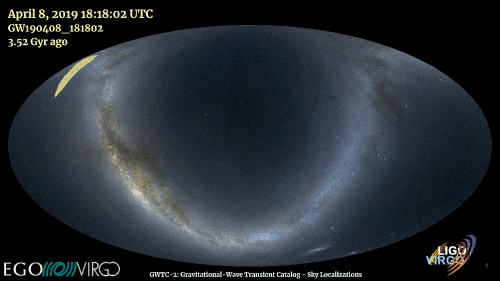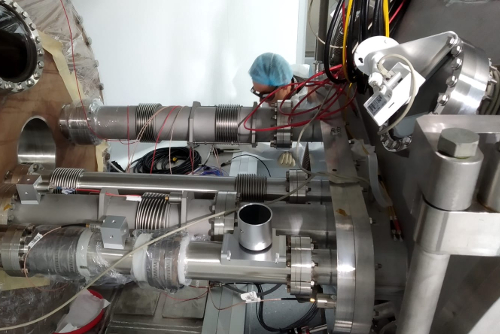Gravitational Waves: astrophysics, source modeling, data analysis, construction of the Virgo detector
The classification and definitive analysis of the 39 events detected by Virgo and LIGO in the third observation period (which ran from April to October 2019) was published today on the ArXiv online archive. Most of these are black hole mergers, the characteristics of which, however, question some established astrophysical models and open up new scenarios. A likely merger of neutron stars and two probable ‘mixed’ neutron star-black hole systems were also detected in the same period.
Virgo and LIGO have announced the detection of an extraordinarily massive merging binary system: two black holes of 66 and 85 solar masses, which generated a final black hole of 142 solar masses. The remnant lies in a range of mass that has never before been observed, either via gravitational waves or with electromagnetic observations.
The final black hole is the most massive ever detected with gravitational waves.
The breaking of the mass record of the Virgo and LIGO observational runs is just one of the many special features that make the detection of this exceptional merger an unprecedented discovery.
The LIGO Scientific Collaboration and the Virgo Collaboration (the LVC) have agreed to suspend their third observation period, named O3, which has been running since the 1st of April, 2019. The suspension, which will be effective within one week, is motivated by the worldwide COVID-19 pandemic. Public health and worker safety are always the top priority for the LVC.
Read more
On April the 25th, 2019, the network of gravitational-wave (GW) detectors formed by the European Advanced Virgo, in Italy, and the two Advanced LIGO, in the US, detected a signal, named GW190425. This is the second observation of a gravitational-wave signal consistent with the merger of a binary-neutron-star system after GW170817. GW190425 was detected at 08:18:05 UTC; about 40 minutes later the LIGO Scientific Collaboration and the Virgo Collaboration sent an alert to trigger follow-up telescope observations.
Advanced Virgo and the two Advanced LIGO detectors resume the taking of science data on the 1st of November, 2019, following a one-month-long stop. This event marks the restart of the third observation period, named O3, which started on the 1st of April, 2019. All three of the interferometers in the global gravitational-wave observatory paused O3 on the 1st October, 2019, in order to work on improvements to enhance the performance of the detectors.
The world’s three principal gravitational-wave detectors - LIGO in the US, VIRGO in Italy, and now KAGRA in Japan - have today, the 4th of October, 2019, signed a memorandum of agreement (MoA) that covers scientific collaboration. The agreement includes the joint observation of gravitational waves and the sharing of data over the coming years, while it also foresees the expansion of the collaboration through the welcoming of new partners in the future.






